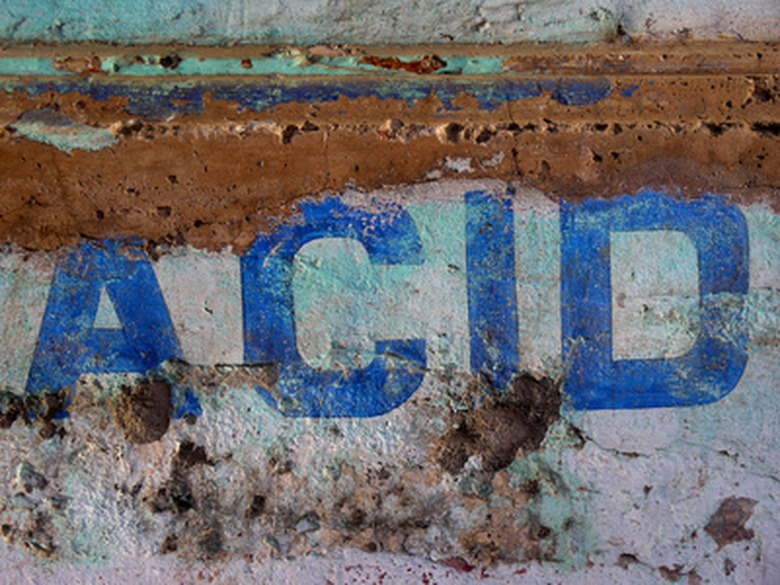How To Convert Borax To Boric Acid
Converting Borax to Boric Acid is a simple experiment that can be performed in schools. The conversion shows how molecule exchange, through contact, can change the structure of two different compounds. In terms of practical uses, Boric acid is used in the manufacture of heat-resistant glass, in insecticides, and in the soap-making process. Borax is a chemical compound commonly found in household cleaning products.
Step 1
Dilute 25mm of Hydrochloric acid with 75mm of distilled water. Shake the test tube to ensure the solution is properly mixed.
Step 2
Put 7g of Borax into a beaker. Pour in 20mm of boiling water and allow the Borax to dissolve.
Step 3
Put some ice into the large beaker. Pour the test tube of hydrochloride solution into the smaller beaker containing the Borax solution. Put the small beaker into the ice bath to speed the reaction. Wait for the Boric acid solution to chill completely.
Step 4
Put filter paper over the top of a clean test tube and pour the Boric acid solution through the filter paper. The solid Boric acid substrate will catch in the filter paper.
Step 5
Scrape the Boric acid substrate onto a petri dish and allow to dry.
Things Needed
- 75mm cold distilled water
- 25mm Hydrochloric acid
- 7g Borax
- 20mm boiling water
- Small beaker
- Large beaker
- 2 test tubes
- Petri dish
- Filter paper
- Ice
Cite This Article
MLA
Jackman, John. "How To Convert Borax To Boric Acid" sciencing.com, https://www.sciencing.com/convert-borax-boric-acid-7826421/. 24 April 2017.
APA
Jackman, John. (2017, April 24). How To Convert Borax To Boric Acid. sciencing.com. Retrieved from https://www.sciencing.com/convert-borax-boric-acid-7826421/
Chicago
Jackman, John. How To Convert Borax To Boric Acid last modified March 24, 2022. https://www.sciencing.com/convert-borax-boric-acid-7826421/
